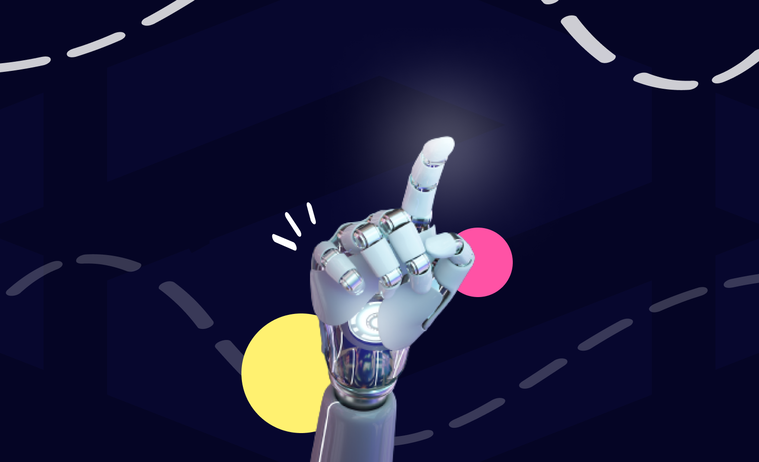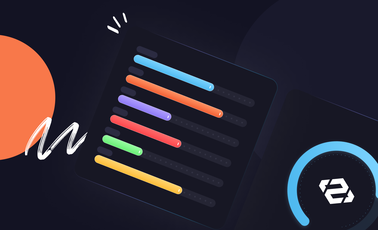How AI Improves Data Quality
ChatGPT's fast rise to popularity in December 2022 once again brought the potential of artificial intelligence (AI) under the spotlight. Using AI for a chatbot proved a lot of fun and also provided users with retweetable material for social media, but that couldn't be all there is to AI.
Among the use cases AI is fit for, the ones related to data management and analytics look the most mature, and they are where AI has been making a difference for quite some time. It's now time to ignore the usual infatuation with the shiny new toy and look at what AI can do for us on a consistent basis.
Improving data quality
Data quality has become part of the corporate agenda in recent years as companies have come to appreciate the value of being data-driven. Data quality has six dimensions (accuracy, completeness, consistency, validity, timeliness, and uniqueness), and ensuring that the data possesses all these six attributes takes a company-wide data governance policy.
Finding out whether data stored in different repositories are consistent with each other, presented in a valid format, or contain the required information can be a labor-intensive task. That's why you won't find many people volunteering for such jobs at your company. However, organizations cannot afford to ignore data quality problems just because they are difficult to tackle. Not doing anything about data quality problems may cost 100X as much as taking action to ensure data quality before problems arise. To make matters worse, this figure does not include the damage your reputation already suffers and the cost incurred from the wrong decisions made. Gartner claims that poor data quality costs an organization $12.9 million on average, which is no small sum.
Organizations conduct data cleansing to fix errors, remove duplicates, and fill in the missing data points. Considering the amount of data organizations have to deal with today, it is a tall order to expect employees to manually take care of data cleansing. AI technology is tailor-made for this use case. Data creates patterns as it accumulates. Being notoriously good at pattern recognition, AI can be used to identify anomalies and correct data points that do not fit with the rest of a data set. Using AI to take care of labor-intensive tasks optimizes resource allocation and frees up engineers and data scientists for work that is better suited to their areas of expertise.
Helping weave the data fabric
Breaking down data silos and creating a unified, single view of data is something every enterprise aspires to do nowadays. One such concept developed to cater to the data integration needs of enterprises is data fabric. According to Gartner, data fabric is "a design concept that serves as an integrated layer (fabric) of data and connecting processes." It refers to an end-to-end data management architecture used mostly for business intelligence or IoT analytics.
An organization's data is usually scattered over multiple cloud environments, on-premise storage units, IoT devices, and applications. Bringing together this data in a seamless way, forming a unified layer, and continuously updating that layer with new data as it is generated in disparate sources is a huge challenge. An organization has to mobilize all the human and machine capabilities in its toolbox to overcome this challenge.
With the explosive increase in the amount of data that organizations generate every day, handling metadata management has become a task beyond the capabilities of mortal human beings. Discovering and curating data can be a tedious process, which AI and ML can help simplify at scale. AI and ML automate the data discovery process and create a kind of intelligent enterprise data catalog to facilitate the formation of a data fabric. With these two technologies becoming integrated into data ingestion, data processing, and data governance, building a data fabric becomes easier, with less risk of human error in the process.
Enhancing predictive analytics
Predictive analytics is a branch of advanced analytics that leverages data mining, statistical modeling, and machine learning to make predictions about future events. It is widely used by companies to plan ahead to mitigate risks and take advantage of opportunities. The uncertainty caused by the pandemic, supply chain disruptions, and rising energy prices have only served to emphasize the value proposition of this particular branch of analytics.
AI's pattern recognition capability makes it a perfect fit for predictive analytics in inferring the future behavior of people and things by looking at historical and current data. Companies can use predictive analytics to
- schedule the maintenance activities for machinery;
- detect credit risk and fraud in banking;
- identify dissatisfied customers who are about to churn in marketing and sales;
- optimize inventory levels and secure on-time deliveries in supply chain management.
Managing uncertainty ranks high on the priority list of decision-makers. Bringing data together does not suffice for these people. They have to turn data into actionable insights and do this in an ever more chaotic world where butterfly effects are in full force. AI looks slated to become the most loyal assistant for decision-makers in the future.
Conclusion
Technologies that do not fit a common, sensible use case are doomed to remain as fads and get phased out in time—just ask Segway. AI has passed that threshold as it already has found productive roles it can play in different industries. The future looks even brighter for AI. Software is taking over our lives, and the number of experts cannot keep up with the demand for engineering and data science talent. AI seems poised to assume a bigger role in these conditions, whether we like it or not.




 Please
fill out this field
Please
fill out this field









